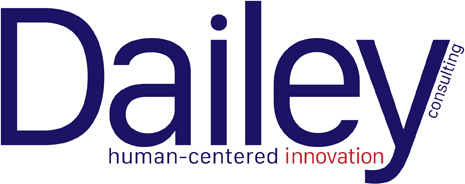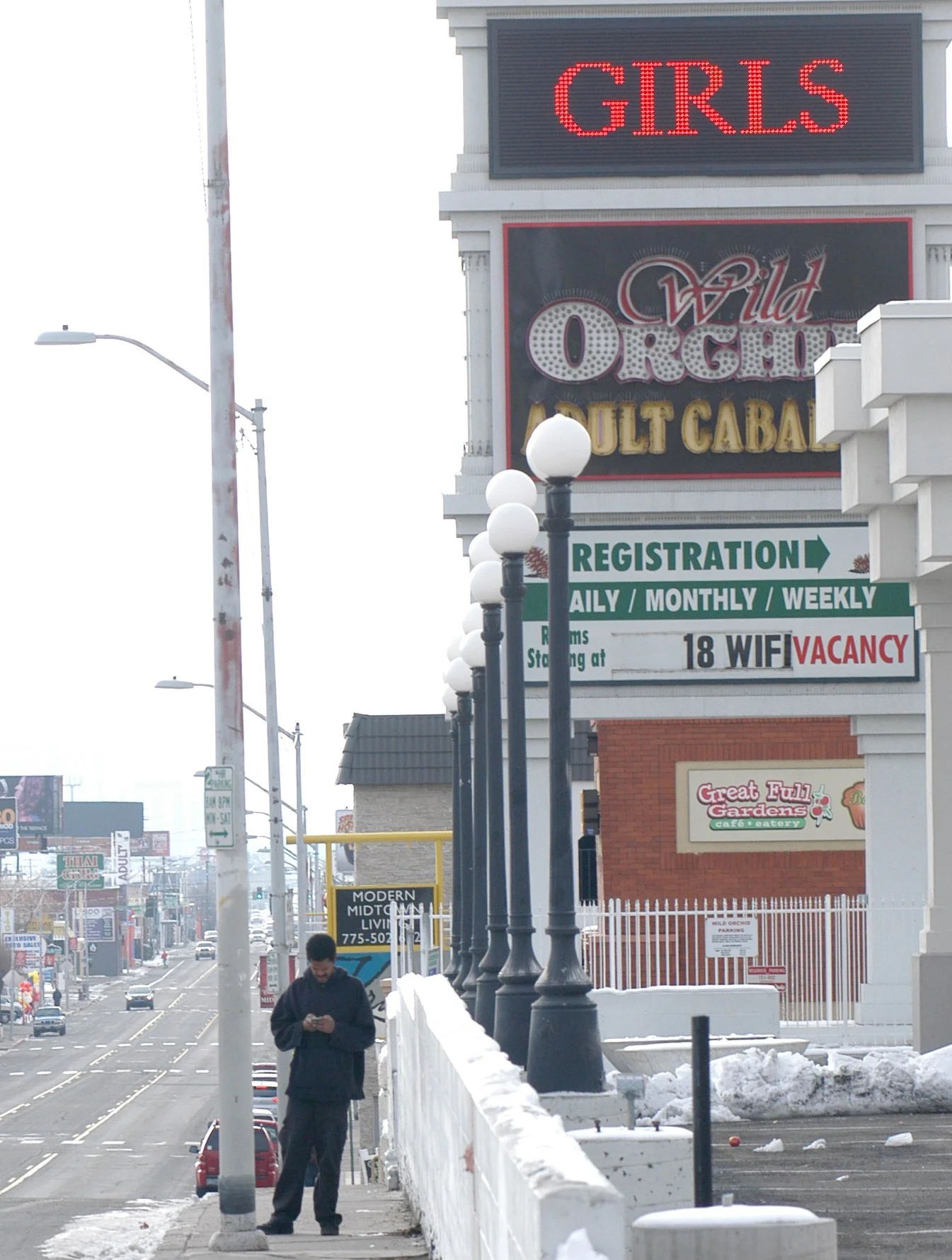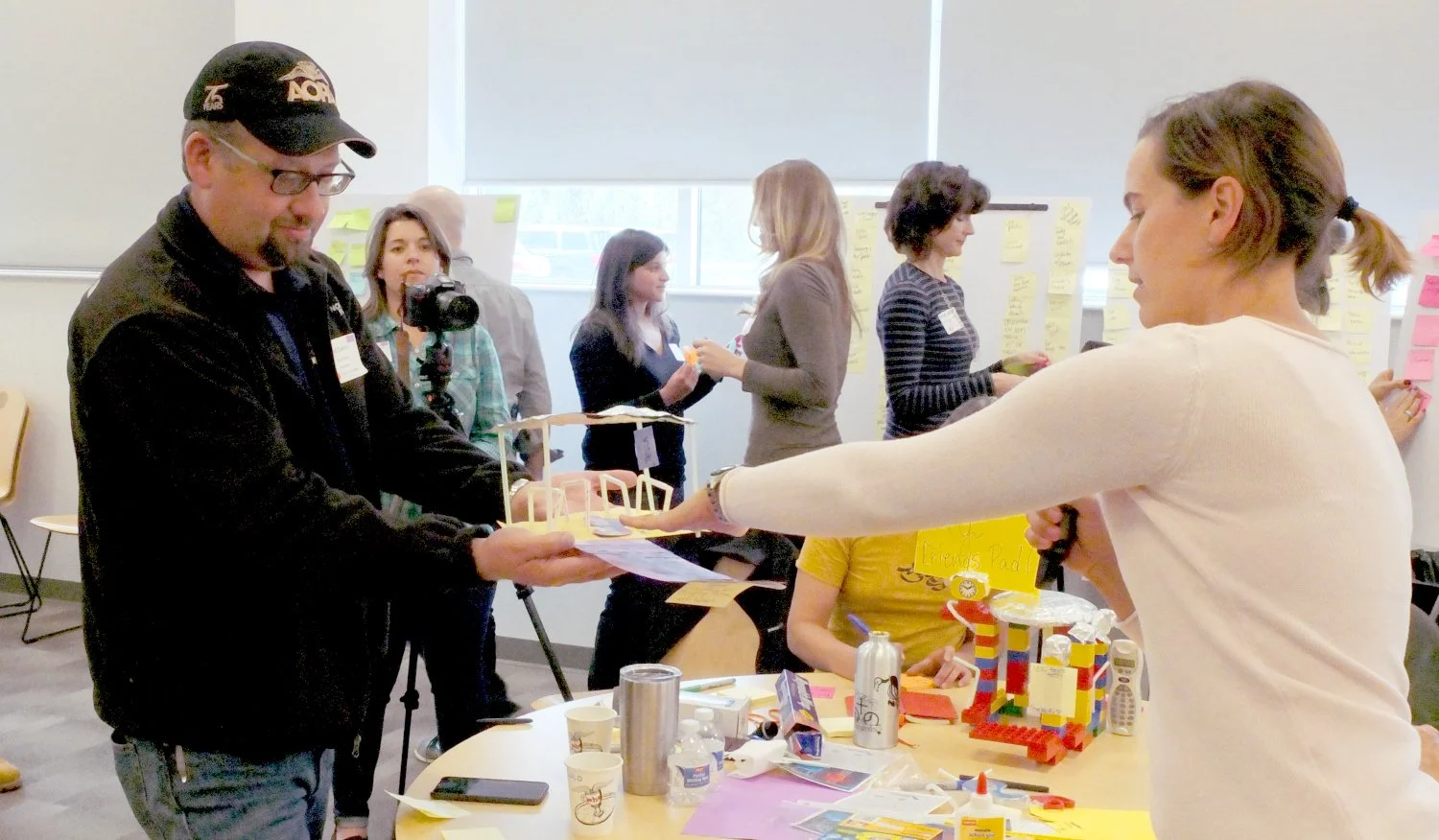Design Thinking
A group including graduate students, community leaders, public safety officials, area residents and more collaborate to re-think Reno’s Midtown district.
Teaching and Doing
In collaboration with a couple of the nation’s leading Human-Centered Design organizations, I created the University of Nevada, Reno’s first required courses in Human-Centered Design and Innovation.
The courses, offered in the Journalism school, guided students through a process that began with identifying social issues being reported in the news, moved into deep-dive research about those issues, mandated empathy with and involvement of the people involved in the issues, and ended with prototypes to spark progress.
Midtown as it was. Note the sidewalk, which is narrower than a wheelchair’s width.
The Midtown project
A graduate-level project involved the re-thinking of the proposed plan to revitalize Reno’s Midtown district. While the city had a nascent plan for the revitalization, our research revealed that some stakeholders’ positions may have been missing from the effort.
So, after significant research, we gathered a group of city representatives, residents, pedestrians — including bicyclists and people with disabilities — police officers, business owners, etc.
We began with an empathy-building exercise. Small groups comprised of a mixture of each of the above, were instructed to walk through Midtown and gather data.
Prototyping a Midtown bike rack.
We then moved through brainstorming and prototyping.
At the end of the day, the group concluded that existing efforts at revitalizing the area should be reconsidered. That night group participants testified before the city council the group’s insights should be included in an emerging plan for the Midtown area.
In the end, many of the ideas produced by the group were implemented into the city’s plan.
The dumpster dive
Another project, this one for undergraduates, involved the issue of why people do not recycle more of their trash.
For this project, people kept logs of what they recycled and what they threw away. And why.
We mapped the location and types of recycling bins versus trash cans. And, in addition to document-based research, we engaged environmental experts.
And then we dove into the dumpsters.
A university student displays a recyclable bottle that was found during the dumpster dive.
We examined the contents of two different dumpsters and cataloged their contents. We found that about 75% of items in the dumpsters could have been either recycled or submitted for composting.
Students then constructed prototypes of user-defined convenient recycling bins, improved bin placement, and proposed communication plans.
They also built a cardboard prototype of a vending machine that required recyclables, rather than currency, to dispense sodas.
Other projects
Other projects included the following:
Food deserts
In this project, undergraduate and graduate students identified communities in which people had difficulties finding and acquiring healthy foods.
The students shopped for food at the closest food source — a convenience market — and ate that food for a week. Then they researched its nutritional value.
The students also ate at a food pantry. And some of them worked there. They visited a food bank. And they observed shopping and food behaviors from a variety of neighborhoods. They compared Whole Foods shoppers’ behaviors to Savers grocery story shoppers’ behavior.
Their conclusion was “this isn’t fair.”
Proposed solutions included block parties where area chefs would compete, using only food produced by the community, for the healthiest and tastiest meals.
And more.
Other projects included cooperating with hospitals and hospital patients to re-think chemotherapy and cancer support; working with community members to decrease automobile traffic by increasing pedestrian and bicycle use inviting a homeless person to attend our class so that we could better understand homelessness.




